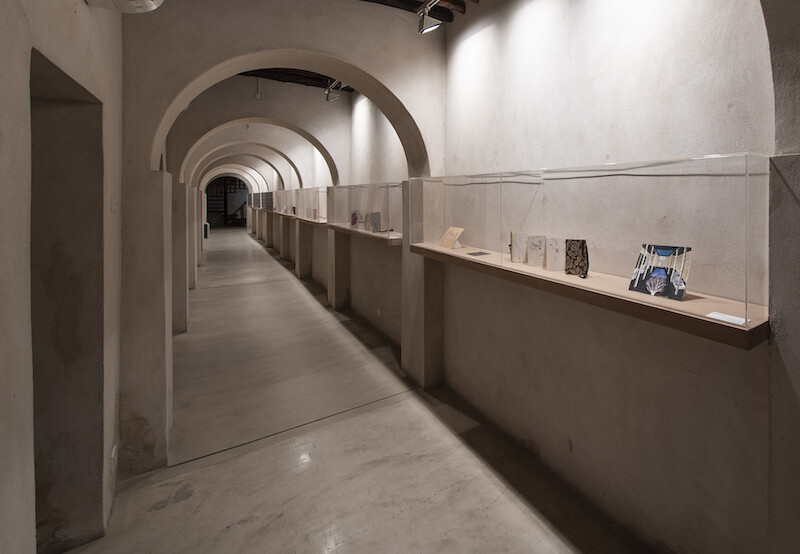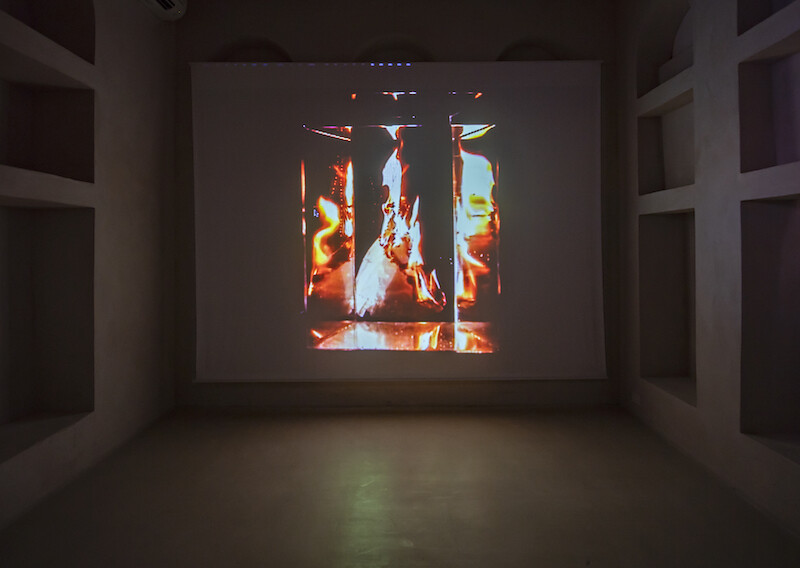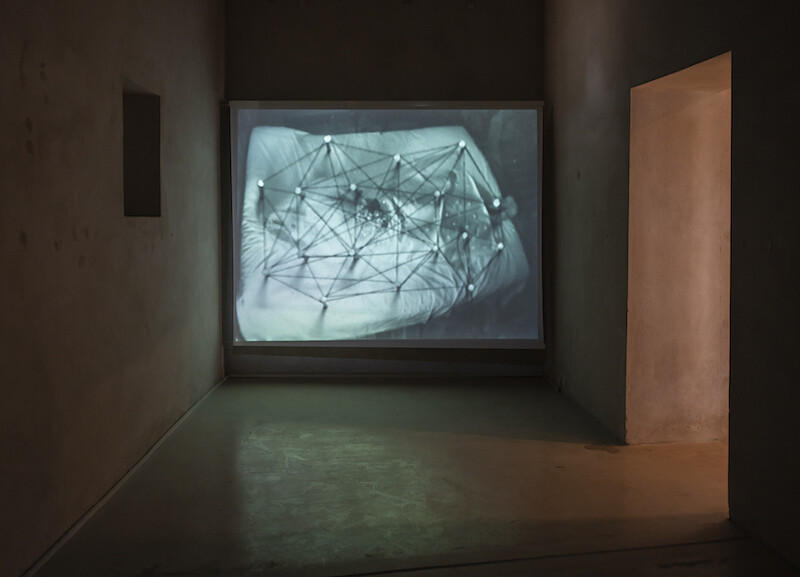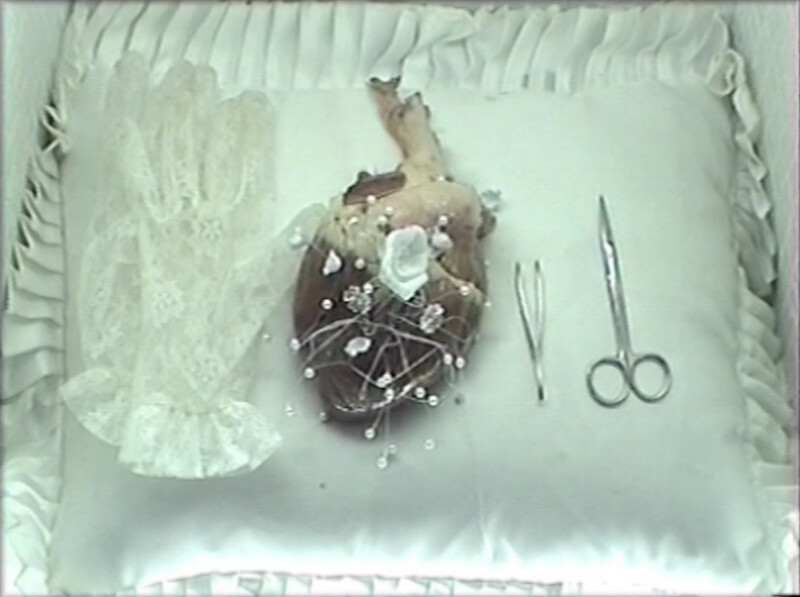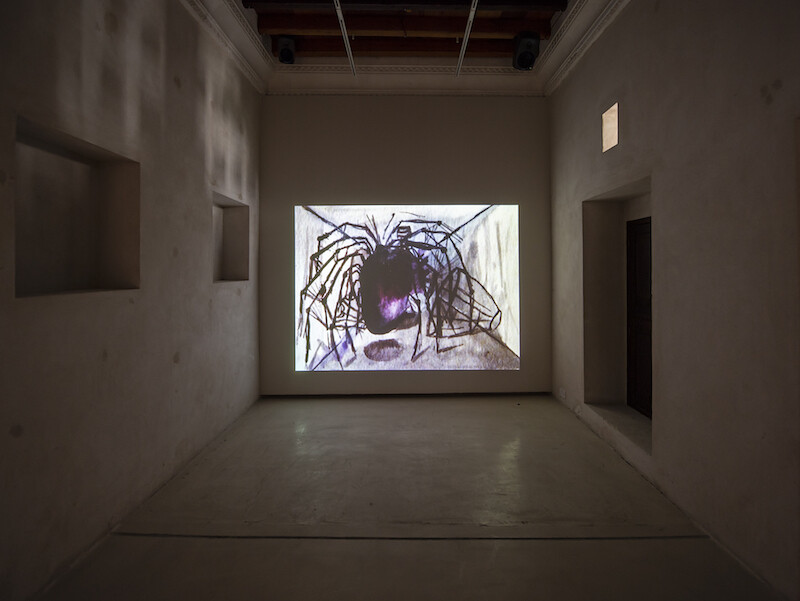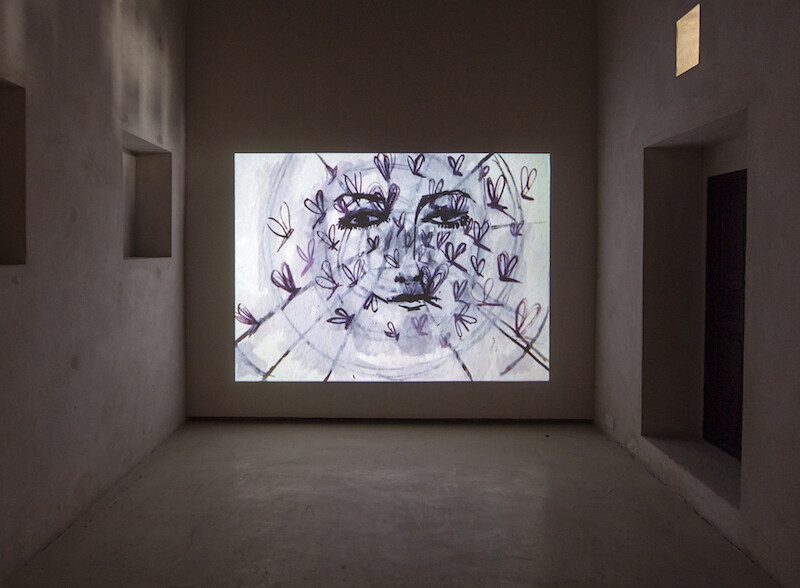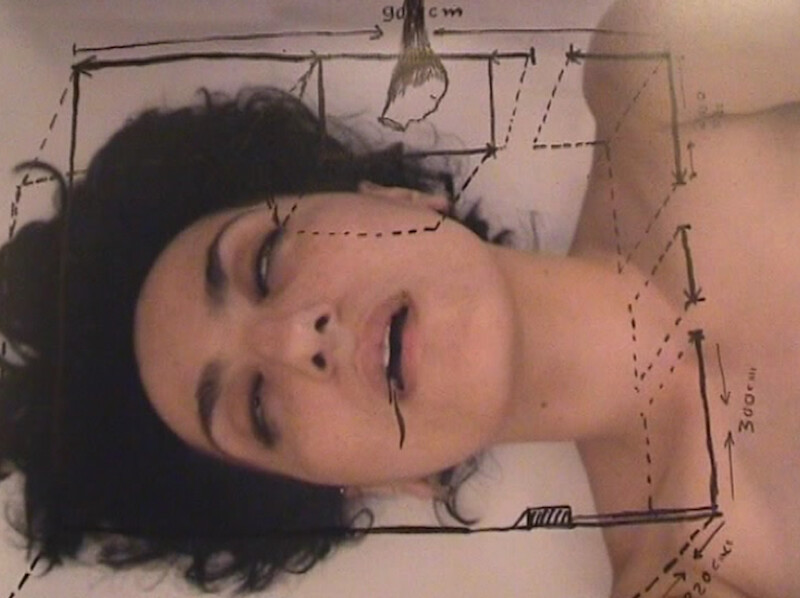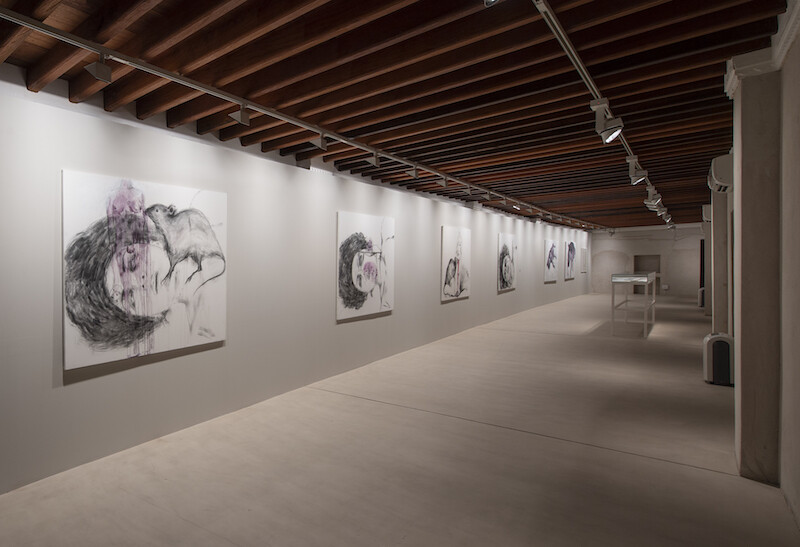By the time I knew her in 2009, before her death in 2012, at only 37, Amal Kenawy seemed to gleam with elite art world prestige, the kind that one assumes would protect against forgetting. The Egyptian artist’s darkly eerie, fungible, genre-defying productions were shown in major exhibitions and biennials around the world, and now, a retrospective at the Sharjah Art Foundation (SAF), “Frozen Memory,” seems to attest to the continued endurance of her legacy. Co-curated by SAF’s director Hoor Al Qasimi and Suha Shoman, the executor of the artist’s estate, the exhibition brings together Kenawy’s major works: 11 videos, several paintings and drawings, together with volumes of archival material, from notebooks to sketches to funding proposals, spread out among the many chambers that wrap around the two-story courtyard of the Bait Al Serkal.
The show is presented non-chronologically, opening with one of Kenawy’s late pieces, the one most often shown abroad: the controversial Silence of the Sheep (2009), her first (and only) performance in public space. Silence of the Sheep saw Kenawy lead a group of a dozen people (artists and friends, but also day laborers hired for the job) as they crawled through the streets of downtown Cairo. The performance ended in a fight with bystanders and the arrest of Kenawy and the performers. The following year, she used the video documentation as part of an immersive installation that won the Grand Prize at the 12th Cairo Biennale. Now anachronistically cast as an augur of Egypt’s 2011 revolution, only the documentation itself is shown here, as if the whole work were the video. This posthumous presentation of Silence of the Sheep encapsulates the challenges of presenting Kenawy’s work without her, to which this retrospective is not immune—how to account for the mutable nature of these projects, which Kenawy transformed depending on context; how to adequately restage something that had been so charged by the artist’s own body and personality?
Take the earliest work on view, the one that gives the retrospective its name: Frozen Memory from 2002, Kenawy’s last collaboration with her older brother, Abdel Ghany, which introduces her longstanding preoccupation with an arcane interior perspective, a tenebrous symbolic space informed by her journals and dream diaries. It was first presented as an immersive, two-room mise-en-scène punctuated by surreal sculptural elements (like an illuminated white gown filled with living butterflies) and a slide show, but at the Bait Al Serkal there’s only a short video projected in a dark, empty room. As an unintelligible female voice bubbles up from the sonic depths, a hand-cut paper tree listlessly floats underwater in a glass chamber, its branches splayed like bronchial tubes; a handwritten letter suddenly drifts in, bleeding ink down its face; tongues of flame illogically sputter up and spit out a perfect white wedding dress.
Kenawy kept repurposing the same narrative tectonics and imagery, as in her startling performance piece of the following year, The Room. Again, only the video component is shown in Sharjah, a projection that flashes between an animated space populated by elliptical symbols (that same paper tree, a butterfly, a pair of doll’s legs), and a real, white-tiled bathroom, where Kenawy sits, in profile, dressed as a young bride. Switching focus, the camera zooms in on her lace-gloved hands embroidering a beating heart (an alarmingly real one) with tiny pearls. When Kenawy showed the work at Cairo’s Townhouse Gallery in 2003, she sat in front of a white-tiled wall, dressed in a white kaftan and scarf, manipulating an actual animal heart as the video played beside her. In 2007, restaging The Room in the ruins of a Byzantine church in Amman, she set the dress on fire.
In 2003, Kenawy was still married; some viewers were tempted to read the work as commentary on her own circumstances, or to root out a more general feminist critique. Her dream-world iconography often bewilders interlocutors looking for an easy framing device; it resists overdetermined expectations of place, religion, or gender. And even if Kenawy used her own body and interiority as raw material, she insisted her work wasn’t autobiographical, that she was transforming her private psychic matter into a language speaking to the most universal parts of being human: moments of extreme alienation from the self and from society, moments of profound psychological change and distress that occur during transformative thresholds in a life, like marriage or death. That distress courses through the animation The Purple Artificial Forest (2005), with its ethereal soul-devouring entities and slumped acephalous figures. It reaches a keen, violent pitch in another animation, You Will Be Killed (2006), where hallucinatory glimpses of an abandoned military hospital pulse and fade until they give way to a heart-stopping image of Kenawy laying on a table, mouth open, eyes vacant, defaced by simultaneously delicate and brutal animations, accompanied by a soundtrack designed for maximum anxiety.
Anxiety wasn’t Kenawy’s only emotional register. Her work could also be tender and maternal, as when she wrapped up a dilapidated Sharjah building in a puffy, bubblegum-pink quilt (Non-Stop Conversation, 2007, present here through video documentation); or pensive and melancholic, like Booby-Trapped Heaven (2006), a video pitched somewhere between sleep and wakefulness, juxtaposing the surface of an anonymous woman’s massive body with shaky scenes of a barren industrial landscape filled with electricity pylons. Still, even these softer pieces can elicit an unquiet, shivery affective response.
And for me, seeing the exhibition also triggered regret. Kenawy was planning her own retrospective at Cairo’s Townhouse Gallery when I was working there. She passed away a few weeks before the opening. We cancelled the show, and for years spoke about mounting it “next season”—a future that proved indefinite. Ransacking my archives for this review, I found an email from an excellent critic writing a profile on Kenawy for a prestigious magazine in 2013; looking for it now, I realize the essay was never published. At least four different people have told me they wanted to work on a catalogue raisonné for her—it has yet to materialize. When I Googled her name to research certain details I had forgotten, I found a virtual record full of broken links and pocked with inaccuracies.
I was angry that Kenawy wasn’t immune to the inevitability of forgetting, after all, which led in turn to a frustration with this retrospective, and all the things that seemed missing (such as the very early or very late works, which are for one reason or another not part of the estate). Like Silence of the Sheep, the performance Cairo Eating Me (2007) was represented only by a video element, as if that were a discrete work onto itself—who will remember the force of the actual performance, the outcry when Kenawy held a gun to her head onstage? But perhaps any institutional exercise to historicize someone who was just here would be unsatisfying. Ultimately, Shoman and Al Qasimi are the first to have done the heavy lifting of keeping this body of work in the present. Those of us who care about it are obliged to recommit our attention, and make sure it stays in full view.

